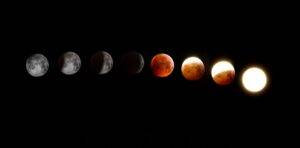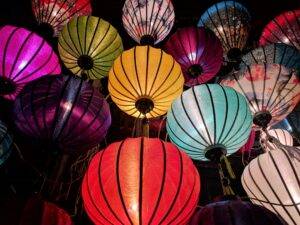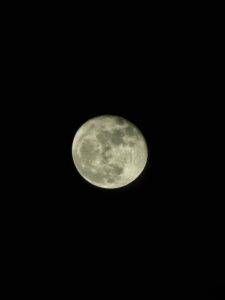Lunar New Year is a traditional festival celebrated by many East Asian countries, including  China, Vietnam, Korea, and Singapore. It typically falls between January and February and marks the beginning of the lunar calendar. The festival is celebrated with a variety of customs and traditions, such as family reunions, the exchange of red envelopes filled with money, and the decoration of homes with red lanterns. The Lunar New Year is also a time for people to reflect on the past year and make wishes for the year to come. The exact date of the Lunar New Year varies from year to year, based on the lunar calendar.
China, Vietnam, Korea, and Singapore. It typically falls between January and February and marks the beginning of the lunar calendar. The festival is celebrated with a variety of customs and traditions, such as family reunions, the exchange of red envelopes filled with money, and the decoration of homes with red lanterns. The Lunar New Year is also a time for people to reflect on the past year and make wishes for the year to come. The exact date of the Lunar New Year varies from year to year, based on the lunar calendar.
The Lunar New Year tradition originated in China and has been celebrated for thousands of years. The exact origins are not known, but it is believed to have begun as a way to mark the start of the agricultural year and pay tribute to ancestors and gods. The festival was later adopted by other East Asian countries and is now celebrated as a major holiday in China, Vietnam, Korea, Singapore, Malaysia, Indonesia and other countries. The date of the Lunar New Year is determined by the lunar calendar, which is based on the cycles of the moon. It usually falls between January 21 and February 20, with the exact date varying from year to year. The festival traditionally lasts for 15 days, with the most important celebrations taking place on New Year’s Eve and New Year’s Day.
of years. The exact origins are not known, but it is believed to have begun as a way to mark the start of the agricultural year and pay tribute to ancestors and gods. The festival was later adopted by other East Asian countries and is now celebrated as a major holiday in China, Vietnam, Korea, Singapore, Malaysia, Indonesia and other countries. The date of the Lunar New Year is determined by the lunar calendar, which is based on the cycles of the moon. It usually falls between January 21 and February 20, with the exact date varying from year to year. The festival traditionally lasts for 15 days, with the most important celebrations taking place on New Year’s Eve and New Year’s Day.
The lunar cycle refers to the 29.5-day period during  which the Moon goes through all its phases, from the new Moon to the full Moon and back again. This cycle is caused by the relative positions of the Moon, Earth, and Sun. The lunar cycle is divided into four main phases: new Moon, first quarter, full Moon, and last quarter.
which the Moon goes through all its phases, from the new Moon to the full Moon and back again. This cycle is caused by the relative positions of the Moon, Earth, and Sun. The lunar cycle is divided into four main phases: new Moon, first quarter, full Moon, and last quarter.
At New Moon, the Moon is between the Earth and the Sun, so we cannot see it from Earth. As the Moon orbits the Earth, we begin to see a small portion of the lit side, which is called the first quarter. Halfway through the lunar cycle, we reach the full Moon phase, when the lit side of the Moon is fully facing Earth. After the full Moon, the Moon enters the last quarter phase, when the lit side is decreasing until the new Moon phase again.
The lunar cycle has been important in many cultures throughout history, particularly in relation to agriculture, as the lunar calendar is used to time planting and harvesting. It also has been used to track time, and many traditional festivals, such as Lunar New Year, are based on the lunar calendar and can be observed from any location on the Earth, as long as the sky is clear enough. The phase of the Moon will look the same from all parts of the world, as the Moon’s position relative to the Earth and the Sun is the same for everyone. However, the timing of the Moon’s phases may vary depending on your time zone. For example, if you are observing a full Moon at midnight in New York City, it will be considered as the next day in Tokyo and earlier on the same day in Los Angeles.
to time planting and harvesting. It also has been used to track time, and many traditional festivals, such as Lunar New Year, are based on the lunar calendar and can be observed from any location on the Earth, as long as the sky is clear enough. The phase of the Moon will look the same from all parts of the world, as the Moon’s position relative to the Earth and the Sun is the same for everyone. However, the timing of the Moon’s phases may vary depending on your time zone. For example, if you are observing a full Moon at midnight in New York City, it will be considered as the next day in Tokyo and earlier on the same day in Los Angeles.
Additionally, the Moon’s visibility may be affected by local weather conditions and light pollution. In urban areas with bright lights, it may be difficult to see the Moon during certain phases, such as a new Moon, as the Moon is not as bright as the surrounding lights. While in rural areas, or with less light pollution, the Moon can be seen more clearly during all phases.
Elevations above sea level can have an impact on lunar observations in certain ways. At higher elevations, the atmosphere is generally thinner, which can result in the Moon appears to be slightly brighter and clearer than it would at lower elevations. This is because there is less air between you and the Moon to scatter and absorb light.
However, elevation can also affect the visibility of the Moon during certain phases, such as a new Moon, when the Moon is close to the horizon and its light is scattered more by the thicker atmosphere at lower elevations. This can make it harder to see the new Moon when you are at a lower elevation, and the Moon may appear to be more obscured by the horizon.
Another factor that can affect the visibility of the Moon is the presence of natural or man-made obstacles such as mountains, tall buildings or trees. These can block the view of the Moon, making it more difficult to observe, regardless of the elevation.
To summarize, elevation plays a role in lunar observations, but it depends on the phase of the Moon, the time of the observation and the presence of other factors that can affect visibility.
The Jewish calendar relays and is based on a lunar cycle, similar to the traditional Chinese and other East Asian calendars. The Jewish lunar calendar is called the Hebrew calendar and it is used to determine the dates of Jewish holidays and other religious observances. The Hebrew calendar is a lunisolar calendar, which means that it is based on both the lunar cycle and the solar cycle. The lunar cycle is used to determine the months, while the solar cycle is used to ensure that the holiday of Passover occurs in the spring and starts on the fourteen of the month of Nisan.
The Jewish New Year, Rosh Hashanah, is based on the lunar calendar and usually falls in September or October. The Jewish lunar year typically has between 354 and 385 days, shorter than the Gregorian year.
The Jewish calendar is adjusted periodically with the addition of an extra month, called a leap month, to ensure that the holidays occur in their proper seasons. The Jewish lunar calendar is used by Jewish communities all over the world, including Israel, the United States, and Europe.